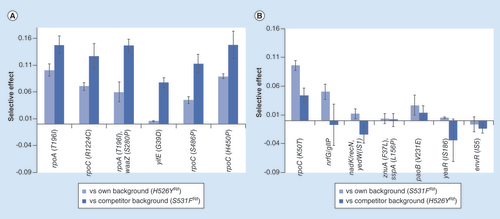Figures & data
First, polymorphic populations are created by mixing, in a 1:1 ratio, clones with two different antibiotic resistance mutations. All clones are isogenic, except for this different resistance mutation and a neutral fluorescent marker. 16 replicate populations are followed for each competition, where half of these replicates have one of the resistances linked with one of the neutral markers, while the other is linked to the other marker. Three different competitive scenarios were studied, between Rifampicin mutations (circles) and between Rifampicin and Streptomycin (squares). Next, populations are passaged in rich media in 96-well plates, organized in a checkered layout and separated by control wells (with media but without bacteria). Every 24 h, all populations are passaged serially into a new 96-well plate with fresh media, during 30 days. The frequencies of the neutral markers (and hence the resistance alleles) are analyzed to unravel possible differences in the evolutionary parameters according to the resistance background.
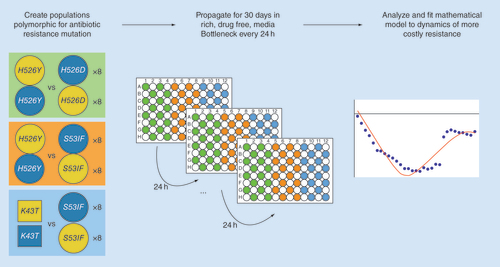
(A) Long-term dynamics, for 30 days (280 generations) of evolution in 15 replicates of a population composed of resistance strain H562YRif and resistance strain H526DRif. Shown are the dynamics for the H526YRif background. The slope of the black line represents the initial difference in fitness between the resistances. (B) Whisker-box shows the relative fitness differences inferred for new beneficial mutations between the two resistant backgrounds, with H526YRif background as a reference. (C) Whisker-box shows the relative differences in time of appearance inferred for new beneficial mutations between the two resistance backgrounds.
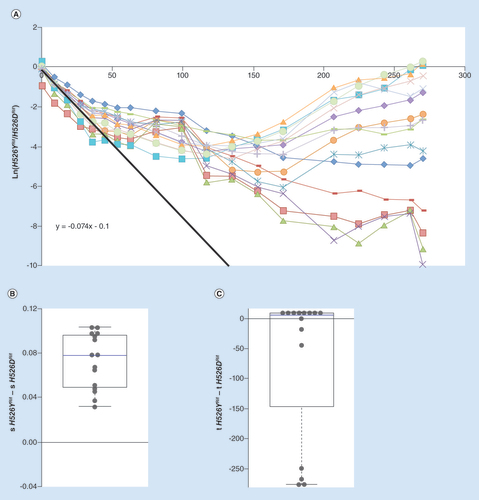
(A) Long-term dynamics, for 30 days (280 generations) of evolution in 16 replicates of a population composed of resistance strain H562YRif and resistance strain S531FRif. Shown are the dynamics for the H526YRif background. The slope of the black line represents the initial difference in fitness between the resistances. (B) Whisker-box shows the relative fitness differences inferred for new beneficial mutations between the two resistant backgrounds, with H526YRif background as a reference. (C) Whisker-box shows the relative differences in time of appearance inferred for new beneficial mutations between the two resistance backgrounds.
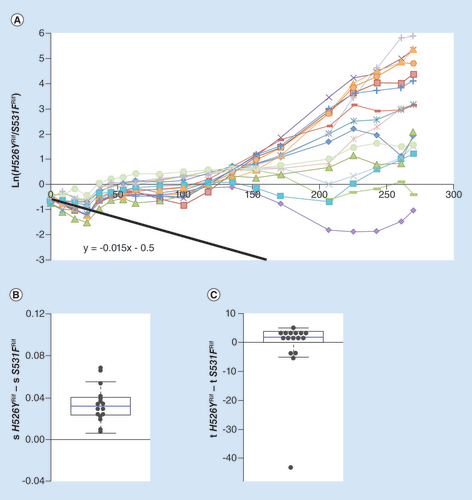
(A) Long-term dynamics, for 30 days (280 generations) of evolution in 14 replicates of a population composed of resistance strain K43TStr and resistance strain S531FRif. Shown are the dynamics for the K43T background. The slope of the black line represents the initial difference in fitness between the resistances. (B) Whisker-box shows the relative fitness differences inferred for new beneficial mutations between the two resistant backgrounds, with K43TStr background as a reference. (C) Whisker-box shows the relative differences in time of appearance inferred for new beneficial mutations between the two resistance backgrounds.
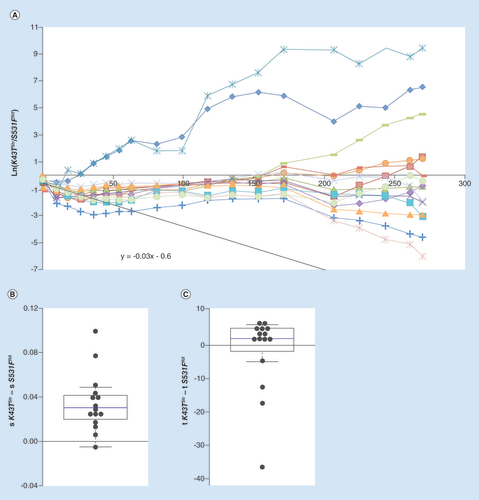
(A) Fitness effects of selected clones evolved from the H526YRif background, when in competition with their ancestor (light bars) or against their other resistant competitor (S531FRif, dark bars). (B) Fitness effects of selected clones evolved from the S531FRif background, when in competition with their ancestor (light bars) or against their other resistant competitor (H526YRif, dark bars).
